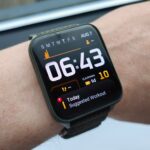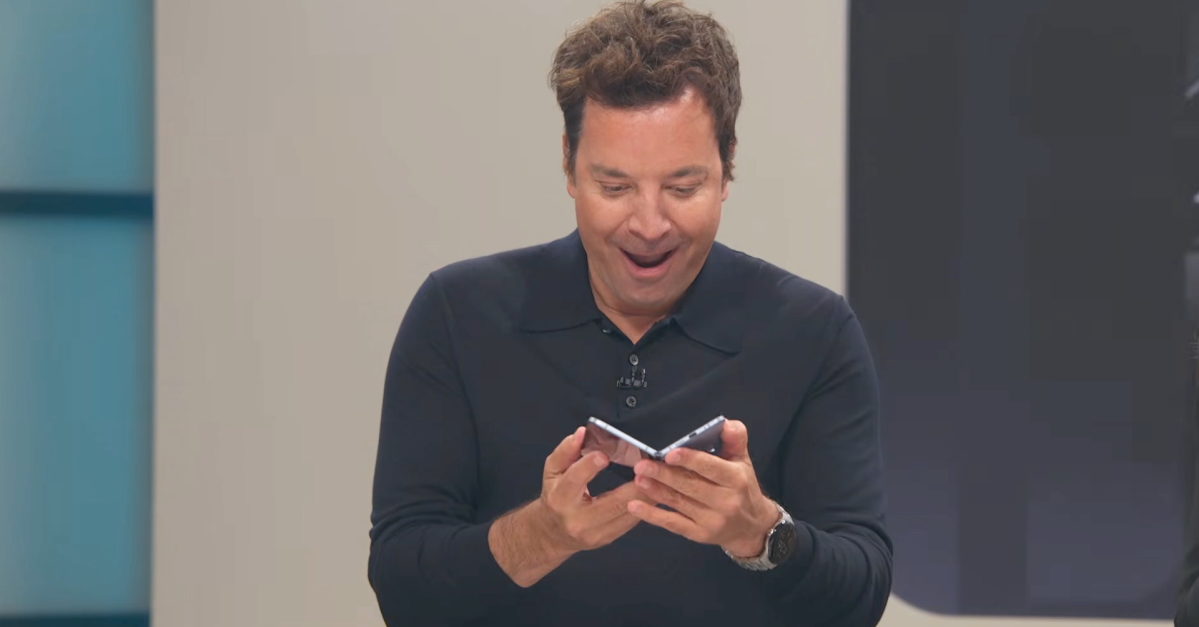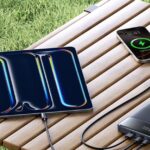For the past twenty years or so, I’ve had a clear image of what a product launch keynote is supposed to be like. A charismatic executive walks across the stage, points to some animations and pre-taped clips, a live demo or two happens, and the crowd goes wild. Clips proliferate on social media and cue the online discourse. You can trace it back to Steve Jobs dressed in a black turtleneck, with a glint in his eye, walking across a stage, asking if a hyped-up audience is ready for one more thing. So iconic was that format, it’s been the blueprint for nearly every tech keynote since.
Today’s Made by Google event was decidedly not that.
It was a lot more like a live taping of The Tonight Show with Jimmy Fallon. Partly because Fallon was the one hosting it, but also because 10 minutes before the show, I was sitting in the studio audience, watching a warm-up comic try and pump up the crowd as an applause sign blazed in the rafters. A small crew of cameramen weaved in and out of four separate sets, one wheeling a teleprompter (because yes, much of the repartee was scripted).
Rick Osterloh, Google’s senior vice president of devices and services, did not stride across the stage to tell us all about the new Pixel 10 phones, Pixel Watch 4, and Pixel Buds 2A. He instead sat on a comfy chair while Fallon “interviewed” him as if he were a Tonight Show guest. Pre-recorded clips were rolled. Once Osterloh’s segment was done, Fallon and another Googler moved onto a different set, proceeding to walk through each new gadget like we were all watching the QVC home shopping network. Surprise guests and a parade of influencers were brought out to showcase new Gemini features, including Alex Cooper and the Subway Takes guy. A wild Jonas brother appeared because he had a “Shot on Pixel 10 Pro” music video to premiere.
Perhaps it was the cognitive dissonance of figures I’ve only ever seen through a screen yap about AI features I’m not 100 percent convinced they fully understood. (I don’t buy that Fallon is that excited about Tensor chips or even knows what dust and waterproofing “IP numbers!” are.) But I found myself feeling like I’d been sucked into an episode of Wandavision, a Marvel show where the Scarlet Witch is trapped in a make-believe world of studio sets and TV tropes. A show where the unnatural cringe and heightened emotions are what cue the protagonist into realizing what she’s seeing is made of smoke and mirrors.
Some of that is just movie magic, baby. Everything on stage feels unnaturally cringe until its intensity is diluted by being filtered through your screen. But the real unsettling thing was understanding that I — and other gadget nerds and media — were not the target audience for this show. The point of a keynote is to be both informative and impressive, telling the most interested audiences about the ins and outs of the new products and attempting to wow them with live demos and technological feats. Today’s Pixel event was less concerned with product minutiae and more concerned with making it all entertaining.
I’m not entirely sure who the target was, though. Was it supposed to be the so-called mainstream Luddite who feels comforted by Fallon learning what RCS means? Perhaps. Or was it disaffected Gen Z youths, drawn in by the Subway Takes guy shilling for wireless buds even as he used a wired mic for his recorded segment? Or was it the faceless masses who are perhaps fed up with their iPhones? In teaching Fallon about RCS, the onstage Googler declared that Google is “done with that conversation” about green bubbles and wink-wink, the Pixel team isn’t afraid to say the “A-word.” I’m not sure even Google knows who it’s targeting, aside from “someone new.”
While trapped in my seat — we were told that once taping began, we could not leave, even if we had to pee — it occurred to me that perhaps this has been a long time coming. It’s as my colleague Mia Sato brought up in her recent Vergecast episode: with TV on the decline, celebrities have to resort to an array of different online outlets to promote their work. Perhaps Google is doing the same. Back in the day, Jobs needed media to get the word out and build buzz. In this new age, companies can go straight to the source through influencers, YouTube (which Google also owns), and livestreams. It’s why you see an increasing number of influencers invited to launch events — and featuring in them. There were plenty in attendance today. It’s not that journalists are getting left out. It’s more that the keynote as we know it isn’t the only way to get attention anymore.
All I know is today felt like the end of an era. That’s not necessarily a bad thing. I’ll confess that traditional keynotes have felt stale as of late. As cringe as it was, this was at least something different.
Read the full article here













